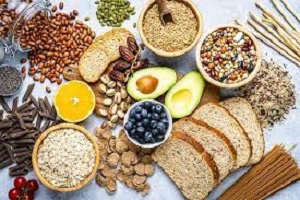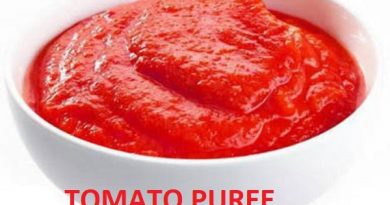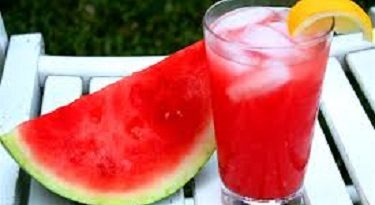High Fiber Foods ~ Benefits & How Much Per Day
High Fiber Foods ~ Benefits & How Much Per Day

Foods High In Fiber ~ What Foods Are High in Fiber
You’ve probably heard how important fiber is for your body if you’re attempting to improve your eating habits or drop a few pounds.
For starters, it keeps you fuller for longer, which means less mindless afternoon munching (goodbye, vending machine!).
However, fiber has numerous other health benefits. “Fiber is one of the most important nutrients,” says Nancy Farrell Allen, a registered dietitian nutritionist (RDN) and Academy of Nutrition and Dietetics spokesman.
“It aids in the prevention of certain diseases such as diabetes, heart disease, and some types of cancer; it also aids in weight management and is required for elimination and good gastrointestinal health.”
Do you want to increase the amount of fiber in your diet? Fiber, along with adequate fluid intake, passes swiftly and readily through your digestive tract, assisting it in functioning effectively.
Obesity, heart disease, and diabetes may all be reduced by eating a high-fiber diet.
Women should aim for 21 to 25 grams of fiber per day, while males should aim for 30 to 38 grams per day.
Benefits of High-Fiber Foods
However, fiber has a plethora of other health benefits!
A high-fiber diet, for example, can lower your chance of getting type 2 diabetes and heart disease, according to a meta-analysis published in January 2019 in the journal the lancet.
A high-fiber diet was also linked to a lower risk of colon cancer, according to the study.
Furthermore, fiber consumption is related to a healthier weight, according to the Mayo Clinic, and something as simple as focusing on adding more fiber to your diet will help you shed pounds, according to research published in the Annals of Internal Medicine in February 2015.
Another way it can assist you achieve your health objectives?
“Insoluble fiber adds bulk to food and isn’t digested, so it helps increase feelings of fullness as well as the frequency of bowel movements,” says kaleigh mcmordie, RDN, Lubbock, Texas. founder of the blog lively table
According to the Mayo Clinic, there are two types: insoluble and soluble, and both have significant benefits.
“Soluble fiber slows digestion, which slows how quickly glucose enters the bloodstream, thereby aiding blood sugar control,” explains McMordie. “Soluble fiber also absorbs water in the intestines, bulking up stools, which can help prevent diarrhea.
” Insoluble fiber, on the other hand, helps prevent constipation. There are many more advantages to using fiber.
You don’t have to look far to discover fiber. According to the National Institutes of Health, it is commonly available in fruits and vegetables, as well as nuts and seeds.
Here’s a breakdown of how much dietary fiber may be found in certain common foods. When purchasing packaged foods, look for the fiber content on the nutrition facts label. It varies depending on the brand.
Foods with a high fiber content
Fiber is derived from plants, so don’t look for it in your chicken supper. The plant kingdom, on the other hand, has a lot to offer, and the best sources of dietary fiber may surprise you.
| Fruits | Serving size | Total fiber (grams)* |
| Raspberries | 1 cup | 8.0 |
| Pear | 1 medium | 5.5 |
| Apple, with skin | 1 medium | 4.5 |
| Banana | 1 medium | 3.0 |
| Orange | 1 medium | 3.0 |
| Strawberries | 1 cup | 3.0 |
| Vegetables | Serving size | Total fiber (grams)* |
| Green peas, boiled | 1 cup | 9.0 |
| Broccoli, boiled | 1 cup chopped | 5.0 |
| Turnip greens, boiled | 1 cup | 5.0 |
| Brussels sprouts, boiled | 1 cup | 4.0 |
| Potato, with skin, baked | 1 medium | 4.0 |
| Sweet corn, boiled | 1 cup | 3.5 |
| Cauliflower, raw | 1 cup chopped | 2.0 |
| Carrot, raw | 1 medium | 1.5 |
| Grains | Serving size | Total fiber (grams)* |
| Spaghetti, whole-wheat, cooked | 1 cup | 6.0 |
| Barley, pearled, cooked | 1 cup | 6.0 |
| Bran flakes | 3/4 cup | 5.5 |
| Quinoa, cooked | 1 cup | 5.0 |
| Oat bran muffin | 1 medium | 5.0 |
| Oatmeal, instant, cooked | 1 cup | 5.0 |
| Popcorn, air-popped | 3 cups | 3.5 |
| Brown rice, cooked | 1 cup | 3.5 |
| Bread, whole-wheat | 1 slice | 2.0 |
| Bread, rye | 1 slice | 2.0 |
| Legumes, nuts, and seeds | Serving size | Total fiber (grams)* |
| Split peas, boiled | 1 cup | 16.0 |
| Lentils, boiled | 1 cup | 15.5 |
| Black beans, boiled | 1 cup | 15.0 |
| Baked beans, canned | 1 cup | 10.0 |
| Chia seeds | 1 ounce | 10.0 |
| Almonds | 1 ounce (23 nuts) | 3.5 |
| Pistachios | 1 ounce (49 nuts) | 3.0 |
| Sunflower kernels | 1 ounce | 3.0 |
Rounded to the nearest 0.5 gram.
Source: USDA national nutrient database for standard reference, legacy release
Shopping List for High-Fiber Foods/High-Fiber Grocery List
Put these goods in your shopping cart the next time you go grocery shopping. They’re high in fiber, which lowers ldl (“bad”) cholesterol, improves digestion, and makes you feel full.
- Apples, bananas, oranges, and strawberries all provide between 3 and 4 grams of fiber. (Eat the apple skins since they contain the greatest fiber!)
- With 8 grams of fiber per cup, raspberries win the fiber race.
- Mangoes, persimmons, and guavas are also high in fiber: a mango has 5 grams, a persimmon has 6, and a cup of guava has approximately 9 grams.
- Vegetables with a dark color. In general, the higher the fiber content, the darker the color of the vegetable. Carrots, beets, and broccoli are high in fiber. Per cup, collard greens and Swiss chard have 4 grams of fiber. Artichokes are high in fiber, with 10 grams for a medium-sized one
- Potatoes. Russet, red, & sweet potatoes all have at least 3 grams of fiber in a medium-sized spud if you eat the skin and all.
- Buy a lot of beans. Navy and white beans have the greatest fiber, however, all beans are high in fiber. Garbanzo, kidney, lima, or pinto beans are all acceptable options for your shopping cart.
They give flavor to salads and make excellent soups and chilis. Beans are also high in protein, making them a nutritious and filling substitute for red meat.
- Add other legumes. Fiber-rich foods include peas, soybeans (edamame), and lentils.
- Read cereal labels. Most cereals include some fiber, but not all of them are made equal. Any cereal with 5 grams of fiber or more per serving is a healthy source.
- Whole-wheat bread. Breads like seven-grain, dark rye, cracked wheat, and pumpernickel are excellent alternatives.
- Whole grains. Bulgur wheat, brown rice, wild rice, and barley are all delicious alternatives to white rice.
- Nuts and seeds include at least 3 grams of fiber per ounce of sunflower seeds, pumpkin seeds, pistachios, or almonds. They are, however, heavy in calories, so a little goes a long way.
- Popcorn. Three cups of air-popped popcorn provide around 4 grams of fiber.
- Try foods with additional fiber. Milk and other dairy products, as well as most liquids, contain little or little fiber by nature. However, new products are changing that picture: search for labels on orange juice, milk, and yogurt that state “fiber added” or “fiber fortified.”
What foods have the most fiber?
Fiber-rich foods include lentils, pears, celery, leafy greens, and oats.
However, fiber occurs in various forms, and people consume varying amounts of specific meals, making it difficult to assess which item is highest in fiber for dietary purposes.
Which Nigerian foods are high in fiber?
Today’s essay will look at Nigerian foods that are high in soluble fiber.
- Oatmeal is a popular breakfast cereal in Nigeria.
- Cowpeas
- Rice
- Sugar potatoes
- Ube (African pear)
- Millest
- Yams
What are the top 10 fiber-rich foods?
Top 10 fiber sources
- Consider a three-bean salad, bean burritos, chili, and soup.
- Whole grains. That includes whole-wheat bread, pasta, and so on.
- Brown rice. White rice contains little fiber.
- A bowl of popcorn. It contains a lot of fiber.
- Nuts
- A baked potato with the skin.
- Berries
- Bran Cereal
How can I get more fiber?
- Consume whole-food carb sources. Fiber is a form of carbohydrate present in plant diets.
- Include vegetables in your meals and eat them first.
- Consume popcorn
- Snack on some fruit
- Whole grains should be preferred over processed grains.
- Consume chia seeds.
- Consume avocados.
- Snack on nuts and seeds or incorporate them into recipes.
Does fiber cause an increase in insulin?
Fiber, in particular, can help you control your blood sugar.
Because fiber cannot be absorbed and broken down by the body, it does not induce a blood sugar surge like other carbs. This can help you maintain a healthy blood sugar level.
What kind of fiber lowers blood sugar levels?
According to a 2016 study, soluble fiber especially benefited persons with type 2 diabetes by boosting insulin sensitivity, dropping blood sugar, and lower cholesterol.
Which fruit has the most fiber?
Vegetables and fruits
With 8 grams of fiber per cup, raspberries win the fiber race.
Mangoes, persimmons, and guavas are also high in fiber: a mango contains 5 grams, a persimmon has 6, and a cup of guava has approximately 9 grams.
Vegetables that are dark in hue. In general, the higher the fiber content, the darker the color of the vegetable.
Is rice a good source of fiber?
According to the USDA, one cup of cooked white rice has slightly over 200 calories, four grams of protein, 44 grams of carbohydrates, and less than one gram of fiber.
Is fiber abundant in bananas?
Bananas, which are high in potassium and fiber and low in sodium, are a significant part of heart-healthy diets such as dash (dietary methods to stop hypertension), which aims for 4,700 mg of dietary potassium per day.
Are Carrots high in fiber?
They are also a good source of fiber, with one medium carrot (61 grams) containing 2 grams. Carrots frequently have a low glycemic index (gi), which measures how rapidly meals boost blood sugar after a meal.
Does fiber help to lower insulin levels? Does fiber lower insulin levels?
Lower fiber consumption of any kind is linked to higher insulin levels. Fiber consumption at recommended amounts may provide considerable cardiometabolic advantages.
How much fiber should I consume to lower my insulin levels?
Our findings suggest that consuming one tablespoon of viscous fiber per day, either as a fiber concentrate in the form of a supplement added to regular food and beverages, such as psyllium, konjac, or guar gums, or by consuming foods high in viscous fiber (beta-glucan), is beneficial.
What foods cause insulin spikes?
In general, foods that are heavy in carbs, which are easily transformed into energy, such as rice, bread, fruits, and sugar, cause blood sugar levels to rise the highest.
Protein-rich foods include meats, fish, eggs, milk and dairy products, and greasy meals.
Does fiber cause you to exit ketosis?
Does fiber kick you out of ketosis? No. Because fiber cannot be digested by the body, it does not raise blood glucose levels like other carbs.
You should be able to stay in ketosis as long as you limit yourself to 50 grams of net carbs per day.
High-fiber foods chart for constipation
Fiber
- Whole grains, which include whole wheat bread and pasta, oatmeal, and bran flake cereals.
- Legumes such as lentils, black beans, kidney beans, soybeans, and chickpeas
- Berries, apples with the skin on, oranges, and pears are examples of fruits.
- Carrots, broccoli, green peas, and collard greens are examples of vegetables.
What foods soften stool quickly?
Here is a list of some foods that soften stool quickly
- Apple: Apples are high in fiber.
- Yogurt is an excellent home treatment for constipation.
- Leafy green vegetables
- Plums
- Linseeds
- Chia seeds:
- Cranberry juice
- Cereal
How much fiber per day
Although there is no dietary reference intake for insoluble or soluble fiber, many experts recommend a total dietary fiber intake of 25 to 30 grams per day, with soluble fiber accounting for around one-fourth (6 to 8 grams per day).

What’s fiber ~ what is called fiber
Fiber is a carbohydrate that the body is unable to digest.
While most carbohydrates are converted down into sugar molecules called glucose, fiber cannot be broken down and hence travels through the body undigested.
High-fiber fruits and vegetables ~ 22 high-fiber foods to eat
- Pears (3.1 g) Pears are tasty and healthful, and they can fulfill a sweet tooth.
- Strawberries (2 g)
- Avocado (6.7 g)
- Oatmeal (10.1 g)
- Apples (2.4 g).
- Raspberries (6.50 g)
- Bananas (2.6 g)
- Carrots (2.8 g)
Top 10 fiber foods for constipation~ fiber
- Whole grains, such as whole wheat bread and pasta, oatmeal, and bran flake cereals.
- Vegetables, such as carrots, broccoli, green peas, and collard greens.
- Legumes, such as lentils, black beans, kidney beans, soybeans, and chickpeas.
- Fruits, such as berries, apples with the skin on, oranges, and pears.
Low-fiber foods ~ Choose these low-fiber foods such as:
- Tender meat, poultry and fish, ham, bacon, shrimp, and lunch meat.
- Eggs, tofu, and smooth peanut butter.
- If tolerated, dairy products.
- Pasta and white rice.
- Bread, biscuits, pancakes, waffles, bagels, saltines, and graham crackers made with refined wheat or rye flour.
High fiber low carb foods ~ what foods are high in fiber but low in carbs?
The best low carb high fiber foods
- Non-starchy vegetables, such as broccoli, cauliflower, spinach, kale, brussels sprouts, cabbage, and asparagus.
- Nuts, such as almonds and walnuts.
- Berries, such as raspberries, blackberries, and strawberries.
- Avocado and coconut.
- Chia seeds and flax seeds.
What’s the significance of fiber? Why is fiber important
Fiber regulates the body’s usage of glucose, which helps to control hunger and blood sugar levels.
Children and adults require 25 to 35 grams of fiber per day for excellent health, but the majority of Americans only get about 15 grams per day.
Whole grains, entire fruits and vegetables, legumes, and nuts are excellent sources.
High Fiber Foods for PCOS
Here are some high-fiber foods to consider:
- Fruit, particularly berries, pears, oranges, figs, and kiwi.
- Vegetables, particularly peas, spinach, squash, and broccoli.
- Oats, brown rice, whole wheat, quinoa, barley, and buckwheat are examples of whole grains.
- Lentils, chickpeas, soybeans, and kidney beans are examples of legumes.
High Fiber Foods for Weight Loss ~ 22 High Fiber Foods to Eat
- Pears (3.1 grams) Pears are both tasty and nutritious and can satisfy a sweet tooth.
- Strawberries (2 grams)
- Avocado (6.7 grams)
- Carrots (2.8 grams)
- Oats (10.1 grams)
- Apples (2.4 grams)
- Raspberries (6.5 grams)
- Bananas (2.6 grams)
High-fiber foods for piles
Consuming fiber-rich meals such as pulses (beans, lentils, chickpeas), whole fruits and vegetables,
High-fiber foods for pregnancy ~ Foods that are high in fiber
- Granary and brown bread.
- Shredded wheat and wheat biscuits.
- Dried fruit such as apricots and figs.
- Root vegetables (carrots and potatoes are good sources)
- Oats
- Bran cereal and bran flakes.
- Broccoli
- Brown rice (opt for a high-fiber version over white varieties)
High fiber foods for kids ~ What foods have the most fiber for kids?
10 Top High-Fiber Foods for Kids
- Whole grains
- Beans, Check out bean salad, chili, beans burritos, and soup
- Quick-Cooking Whole Grains
- Dried Plums. Also known as prunes, these shriveled fruits are practically synonymous with staying regular.
- This airy, low-calorie snack is technically a whole grain.
- Baked potato with skin
- Bran Cereal
- Berries
Benefits of a high-fiber diet
- Regulates bowel movements. Dietary fiber softens and increases the weight and size of your stool.
- Aids in achieving healthy weigh
- Helps you live longer
- Helps maintain bowel health
- Lowers cholesterol levels
- Helps control blood sugar levels


